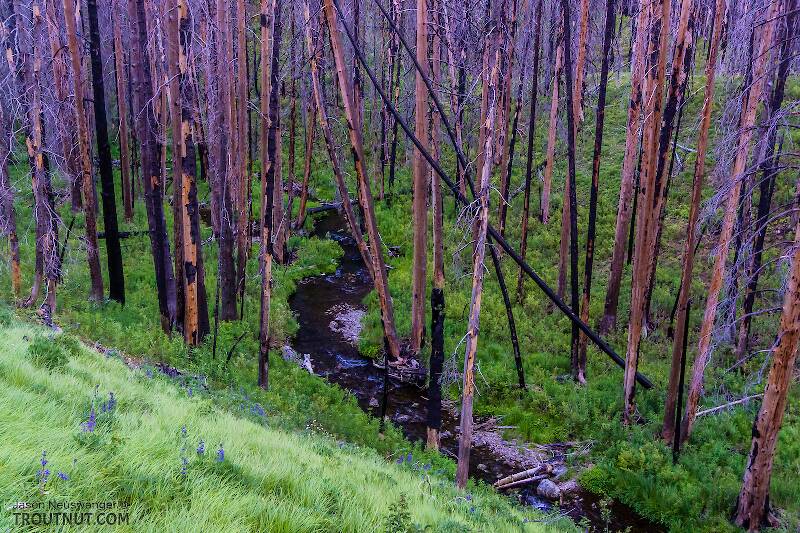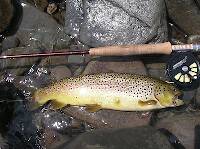
Hex Mayflies
Hexagenia limbata
The famous nocturnal Hex hatch of the Midwest (and a few other lucky locations) stirs to the surface mythically large brown trout that only touch streamers for the rest of the year.
Featured on the forum

I caught this tiny larva without a case, but it seems to key pretty clearly to to Glossosomatidae. From there, the lack of sclerites on the mesonotum points to either Glossosoma or Anagapetus. Although it's difficult to see in a 2D image from the microscope, it's pretty clear in the live 3D view that the pronotum is only excised about 1/3 of its length to accommodate the forecoxa, not 2/3, which points to Glossosoma at Couplet 5 of the Key to Genera of Glossosomatidae Larvae.

Troutnut is a project started in 2003 by salmonid ecologist Jason "Troutnut" Neuswanger to help anglers and
fly tyers unabashedly embrace the entomological side of the sport. Learn more about Troutnut or
support the project for an enhanced experience here.
Zugbuggin on Aug 20, 2010August 20th, 2010, 11:07 am EDT
Now that the temps are hi I've put up my fly rod and I'm spending time refilling my fly boxes getting ready for the Fall & Winter fishing. Last January & Febuary I spend time on the Chattogga River. At times saw spradic hatches of Early Black Stoneflys in sizes 16 & 18, there was very little surface activity so I went to the nymph. The closet thing I had was a Pheasant Tail #16 tied from dyed black pheasant tail with a copper rib which I did ok with. Does anybody have a pattern for a Early Black Stonefly nymph in a size #16 or #18
GONZO on Aug 20, 2010August 20th, 2010, 11:51 am EDT
Just a thought, Tony: The little black stoneflies that you see in Jan. and Feb. are probably Capniidae. Despite the impression given by some tying books, the nymphs are usually more of a reddish brown or yellowish brown rather than black. A standard PT would make a pretty good imitation.
Quick Reply
Related Discussions
Topic
Replies
Last Reply


